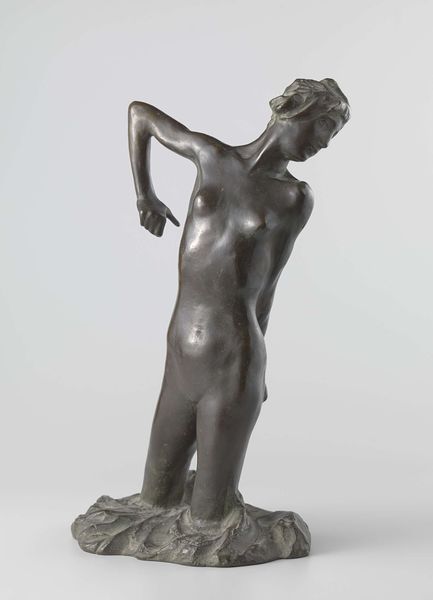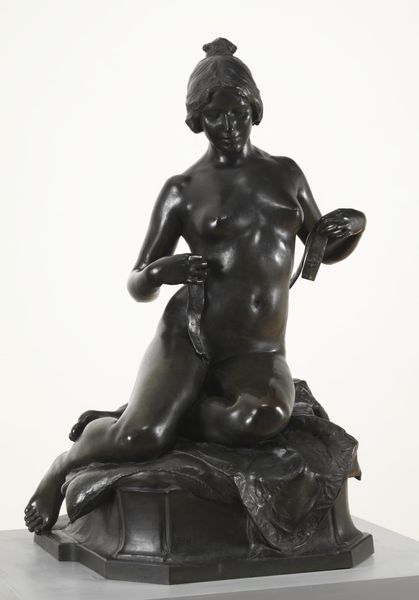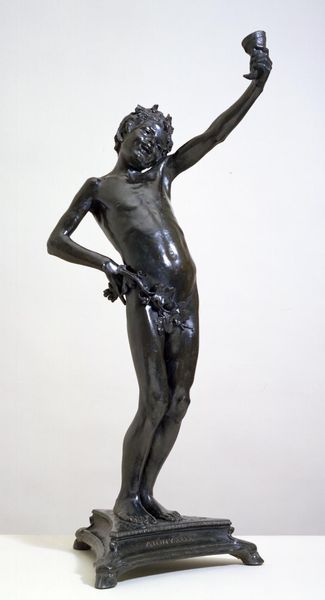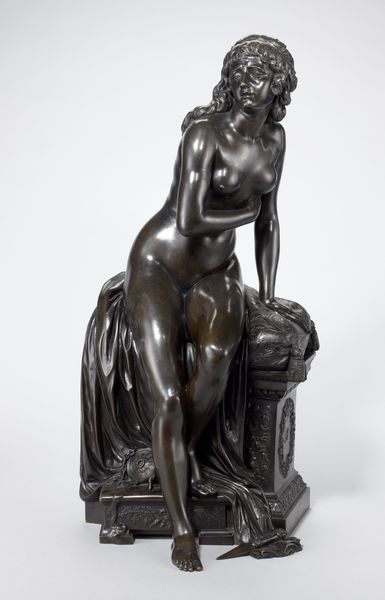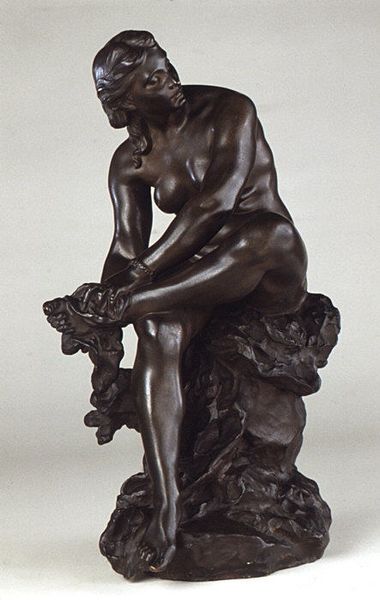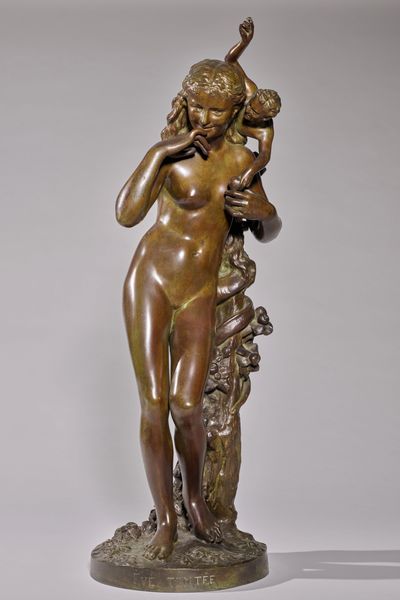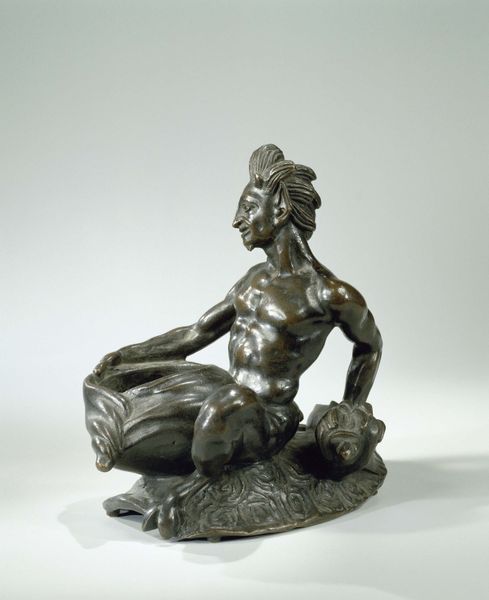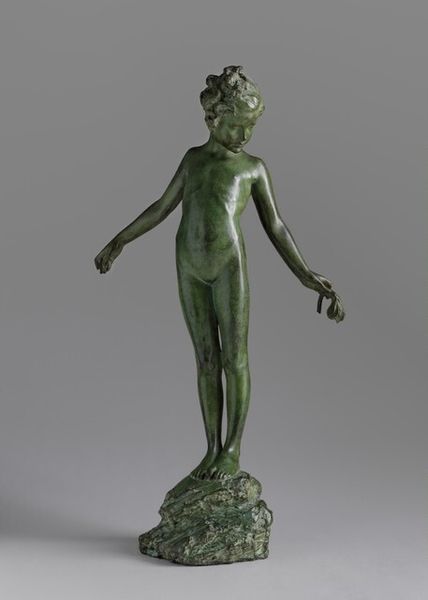
Dimensions: object: 860 x 660 x 430 mm, 71 kg
Copyright: CC-BY-NC-ND 4.0 DEED, Photo: Tate
Editor: This is George Frederic Watts’ bronze sculpture, "Clytie." There’s something so melancholic and heavy about her downward gaze. What do you make of it? Curator: Indeed. I see a profound longing, a yearning perhaps for lost love or recognition. Watts captures that very human emotion through Clytie's posture. The cascading foliage around her seems to echo her inner turmoil, don’t you think? Editor: I hadn't considered the foliage in that light! It definitely adds to the feeling. Curator: Art is like that – it whispers secrets if you listen closely. It’s not just about seeing; it’s about feeling with your eyes, isn't it? Editor: Absolutely. It’s all about the connection.
Comments
Join the conversation
Join millions of artists and users on Artera today and experience the ultimate creative platform.
tate 6 months ago
⋮
Clytie was Watts’s first large sculpture. In his Metamorphoses, the Roman poet Ovid tells of an ocean nymph named Clytie, who fell in love with the sun-god Apollo. When he deserted her, she was changed into a sunflower that turns its head to follow the sun on its daily course from east to west. Watts shows her metamorphosing into a flower, while also suggesting movement over time through the musculature and torsion of the body. He said he wanted to get an impression of colour, by which he meant the variation of light and shade across the surface of the sculpture. Gallery label, September 2004

